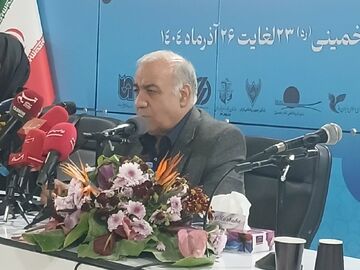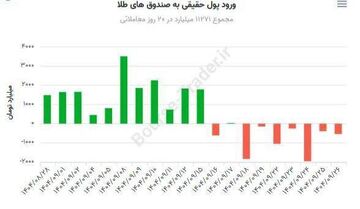Tehran(Bazaar): Jack J. Phillips, Chairman of ROI Institute, in interview with Bazaar News Agency said: innovation comes from the employees an the number one source is the employees.
Jack J. Phillips is Ph.D., Chairman, ROI Institute, Inc.(ROI Institute, Inc., founded in 1992 as a service-driven organization, assists professionals in improving programs and processes using the ROI Methodology® developed by Dr. Jack J. Phillips and Dr. Patti P. Phillips. Working with more than one hundred ROI consultants, ROI Institute applies the ROI Methodology in 20 fields in over 70 countries) and coauthor of "The Value of Innovation".
Following is the full text of the interview:
Bazaar: What should governments do to facilitate the use of innovation in organizations and industries?
Phillips :The first issue is the importance of innovation in organizations. Innovation is absolutely essential. Some even suggest that you "Innovate or Die."Consequently, innovation needs to be a major goal for most countries. The next issue to think about is what is the main source of innovation. The number one source is the employees. Even executives ,who have been labeled "The Most Innovative Executives in the World," have said that innovation comes from the employees. Although innovation may come from customers, competition, suppliers, and government-funded research, the number one source is going to be the employees.
Because you need innovation, and the employees are the number one source. The next issue is that programs must be implemented in organizations to ensure that innovation is delivered. These include programs such as creativity, brainstorming, design thinking, innovation labs, innovation champions, innovation task forces, suggestion systems, and innovation teams. These programs need to be supported by the government, either by funding or other types of support. At the least, they need to be encouraged by the government, suggesting that employers must be innovative and creative in their work within the organizations. That's the only way you can change, prosper, and grow to meet the challenges of the future.
Bazaar: What innovations do you think can currently play a greater role in the efficiency of industries and businesses?
Phillips :This depends on the type of organization, of course. It is helpful to remember that the four major categories of outcomes from innovation are output (productivity—getting more work done), quality (reducing waste, errors, rework and mistakes), time (reducing the time for transactions, activities, and processes), and cost (reducing the cost of transactions, activities, and processes). Usually, innovations will involve technology in some way. It could be the technologies are being used to improve something, or it could be that the technologies are created to replace a current process. The key is to not necessarily focus on big projects but instead get all the employees to focus on minor changes that will roll up in the organizations to significant improvements in the four big categories of outcomes.
Innovation can be purchased from other organizations or other countries. For example, most of the innovation in Dubai is purchased from outside the UAE. Most of the innovation in Sweden is from the employees in organizations in Sweden, supported by the Minister of Enterprise and Innovation.
Remember, innovations can be in every section, department, and function as processes need to be in place to make sure the innovations are realized and successful. This leads us to the next question.
Bazaar: What are the challenges of using innovation in business?
Phillips : It is helpful to understand the value chain for innovation shown in Figure 1.
This value chain shows the importance of managing the innovation process. As the Harvard Business Review pointed out in a cover story by Gary P. Pisano, "The Hard Truth About Innovative Cultures: Creativity can be messy. It needs discipline and management."1 The discipline helps manage the process through the value chain. Sometimes you think that if you just put money into research and development, which is Level 0 in the value chain, then you will have innovation out of the process, which is Level 4. Unfortunately, it breaks down in between at Levels 1, 2, and 3. Structure and discipline are needed to ensure success at each of these levels, and you set objectives to achieve this success.
If employees don't see there is a need for innovation (reaction) and they don't know how to be innovative (learning), they won't actually do anything to be innovative (application). Consequently, there is no impact. So, employees must see the value of innovation, know what they can do to make it work in their organization, and take steps to create new products, processes, activities, and approaches—all focusing on the desired impact. This leads us to the next point: begin with the end in mind.
Figure 1:The Chain of Value for Innovation
Typical Measures Measurement Focus Level
|
0–Input |
· Input into innovation projects including indicators representing scope, volumes, times, costs, and efficiencies |
· Types of innovation · Number of projects · Number of people involved · Hours of involvement · Costs |
![]()
|
1–Reaction and Planned Action |
· Reaction to the innovation projects, including their |
· Relevance · Importance · Usefulness · Appropriateness · Intent to use · Motivational · Recommended to others |
![]()
|
2–Learning |
· Knowledge gained, learning how to develop concepts and how to use skills and competencies to drive innovation |
· Skills · Learning · Knowledge · Capacity · Competencies · Confidences · Contacts |
![]()
|
3–Application and Implementation |
· Application and use of knowledge, skills, and competencies, including progress made and implementation success |
· Behaviors · Extent of use · Task completion · Frequency of use · Actions completed · Success with use · Barriers to use · Enablers to use · Engagement |
![]()
|
4–Impact |
· The impact of the projects and processes expressed as business impact measures |
· New products · Enhanced products · Productivity · Revenue · Quality · Time · Efficiency · Incidents · Retention · Customer Satisfaction |
![]()
|
5–ROI |
· Comparison of monetary benefits from the project to project costs |
· Benefit-Cost Ratio (BCR) · ROI (%) · Payback period |
Source: Phillips, Jack J., and Patricia Pulliam Phillips. The Value of Innovation: Knowing, Proving, and Showing the Value of Innovation and Creativity. Hoboken, NJ: Wiley-Scrivener, 2017.
Innovation should begin with where you want to end. For example, when Uber was created,the end goal was to have a less expensive ride than a traditional taxi, quicker than a traditional taxi, and a better experience than a traditional taxi. With those impacts clearly defined as time, cost, and quality, Uber's system was developed, and it became very successful.2 The key is to identify those end goals with innovation, so you increase the likelihood of achieving them. Setting objectives help to keep the focus that is needed,particularly for those who are going to support the innovation process.Having objectives for reaction, learning, application, and impact will be important.
There will be some resistance to innovation. Employees may not understand why they need this. You must take steps to minimize the resistance and break down the barriers. This is the initial reaction that is necessary. Employees must see that this is needed, it's important to the organization, it's important to them, it's something that they will follow through and make successful, and maybe even recommend to someone else.
Finally, you must recognize that innovation sometimes displaces people. That's not a desirable outcome from a government's perspective. If you can channel the displaced people into other jobs where their work is needed, this makes the situation usually better for both groups. While you are saving money and being more efficient, you are providing some different challenges to other employees.
References:
1. Pisano, Gary P. The Hard Truth About Innovative Cultures: Creativity can be messy. It needs discipline and management. Harvard Business Review, January-February 2019. Accessed athttps://hbr.org/2019/01/the-hard-truth-about-innovative-cultures.
2. Hartmans, Avery and Paige Leskin. "The History of How Uber Went from the Most Feared Startup in the World to Its Massive IPO," BusinessInsider.com, May 18, 2019. Accessed at https://www.businessinsider.com/ubers-history
















نظر شما